- V
- GF
- NS
- DF
- View Recipe Key
Foolproof Shortcrust Pastry (Food Processor Method, VIDEO)
Foolproof Shortcrust Pastry (Food Processor Method, VIDEO)
This foolproof recipe allows you to make flaky shortcrust pastry in seconds by using a food processor. Sweet, savory, and whole-wheat variations included!
This post contains affiliate links. Full disclosure is at the bottom of the article.
For years, I was wary of making pie crusts from scratch. Everything about the process annoyed me: my attempted crusts would be too dry or too wet, they would crack badly when I rolled them out or upon baking, or they would turn out dry or tasteless—never flaky and delightfully buttery—no matter the amount of butter I used.
Part of it was inexperience: I’d never properly learned to make shortcrust pastry, so I didn’t know what to look for. No matter how many recipes I tested, (which all repeated the same advice over and over again—don’t cut out the butter too small, don’t overwork the dough, let it rest), it seemed like I couldn’t master the task. I would’ve gladly resorted to buying pre-made pie dough, except I couldn’t find 100% butter pastry where I live. So, for the longest time, I didn’t make pies at all. A tragedy, right?
A few years ago, I decided I’d tackle the task once and for all. If I’d mastered finicky things such as macarons and éclairs, surely I could make simple, humble pie dough, right? I returned to my reference books and applied myself to the task. I took notes of what worked best for me and tweaked my recipe until I got it down to a science. Now, I can make it with my eyes closed, and the recipe never fails. Ever.
But let’s start at the base: what is shortcrust pastry, exactly? You can use different types of dough to make pies, but shortcrust pastry, also called short pastry or pâte brisée, is probably the most versatile. You can use shortcrust pastry to make both savory and sweet pies and tarts: it’s a supple dough you can roll out to line pie plates and flute to create pretty edges, fold up and over fillings to create free-form galettes, or cut out to weave lattice patterns.
Basic pie dough uses flour, butter, and water at an approximate 3:2:1 ratio. Shortcrust pastry also includes an egg, which alters the classic ratio a little bit, and also makes the dough more supple and easier to roll out. A standard shortcrust pastry flour-to-butter ratio would be closer to 2:1. While tweaking my version of shortcrust pastry, I found out I could use just a bit less butter and still achieve that perfect balance of easy-to-make to buttery deliciousness. There would be nothing wrong with using a 1/4 cup (57 g) more butter in the recipe, but I suggest starting with the amounts stated in the recipe below to see how easily the pastry comes together and get a feel for its texture. Then, tweak it from there if you want to.
Most pie crust recipes will instruct you to keep large pieces of butter in the dough (pea-sized, or even larger), which produces the flakiest pastry. In my experience, this produces a dough that’s more fragile, stickier, and harder to work with. I prefer blending the butter into the flour until the mixture resembles coarse breadcrumbs, which creates a sturdier dough that’s still super flaky but holds any and all kinds of fillings well, including juicy fruity ones.
This food processor method for making shortcrust pastry is perfect if you’re:
- a pie-crust novice (like I used to be)
- lazy (like me) or
- in a hurry (like I pretty much always am)
A food processor allows you to control the shortcrust-making process, giving you a consistent result, every time. It also considerably shortcuts your way to homemade pie dough. My recipe produces perfect shortcrust pastry in less than a minute. Really! I’ve carefully timed how long you should run the food processor at each step, providing the exact time in seconds. This recipe will never fail you: I now routinely make this shortcrust pastry with my son, allowing him to count the seconds in between the steps, and it works, every time.
Learning how to make shortcrust pastry in the food processor is also a great way to familiarize yourself with the looks and texture of “proper” pastry. Making shortcrust pastry by hand introduces so many uncertainties: the result will vary according to the temperature of your hands, that of your working surface, the tool you’re using, and so on. Because a food processor allows you to produce consistent results, you’ll see and feel the pastry as it should be. In time, you’ll be able to go back to the hand method if you want to and enjoy that relaxing feeling you get when you make things from scratch.
My shortcrust pastry recipe includes options to make whole-wheat crusts—great for savory galettes and quiches—and sweet crusts, for desserts. It has now been my go-to crust for years, and it never fails me. If you’ve been shying away from making pie crusts from scratch, or unsatisfied with the recipe(s) you currently use, I hope you’ll give my shortcrust pastry a try. It will surely make you more confident in the pies you make—and happier with the results!
RECIPE VIDEO: Foolproof Shortcrust Pastry Video
See how incredibly easy it is to make shortcrust pastry using a food processor!
Helpful Tips to Make Perfect Shortcrust Pastry
Keep butter and water cold—ice cold
This is crucial: The butter and water you use should in this recipe should be very cold—not room temperature, not cold from the fridge, *ice cold*. Ice-cold butter better distributes into the flour, and ice-cold water allows the dough to come together without melting the butter, both of which are key to producing tender, flaky dough.
- To make ice-cold water, simply pour a bit of water in a small bowl, then fill it with ice. The water will be cold enough to use a minute or two later.
- To make ice-cold butter, cut it into cubes, spread the cubes over a small plate, then plate it in the freezer for 20 minutes.
Shortcut your way to shortcrust
Keep portions of pre-cubed butter stored in airtight containers in the freezer. Whenever I want to make a pie crust, no need to wait 20 minutes for the butter to cool—I simply take out a container of frozen butter cubes and add it straight to the food processor. I prefer this to freezing shortcrust pastry because mixing a fresh batch of dough with frozen butter is much, much quicker than letting shortcrust pastry thaw to room temperature.
Be accurate
This shortcrust recipe works, but only if you’re counting accurately. You’re literally seconds away from under- or overmixing the dough, so don’t take your eyes off the food processor while you make the shortcrust pastry. If needed, look at your watch or use the stopwatch function of your phone to time things accurately.
Roll it out now, not later
If you’ve long been frustrated by cracking pie pastry, I feel you. Freshly made shortcrust pastry needs time to rest in the fridge before baking (at least one hour), which lengthens the dough-making process, as you need to properly let the dough come back to room temperature (about 30 to 45 minutes) before you roll it out.
Here’s how to fast-forward your way to homemade pie crust: Roll the dough out *before* you refrigerate it. I picked up this game-changing tip from Parisian cookbook writer Clotilde Dusoulier: when shortcrust pastry is freshly made—that is, straight out of the food processor—it is wonderfully supple, just like brand new Play-Doh is. This makes rolling it out really easy and actually fun!
After you take the shortcrust pastry out of the food processor, gather it into a ball, then flatten it a bit. Lightly sprinkle your working surface and rolling pin with flour, then roll out the dough to the desired shape and size. Ease into the pan you want to use, letting the excess overhang, or spread it out on a baking sheet. Refrigerate for 30 minutes, then bring back to room temperature 10 minutes before trimming, filling, or shaping the dough.
Savory and sweet recipes that use my foolproof shortcrust pastry
There are so many sweet and savory pies, galettes, and tarts you can make with this foolproof shortcrust pastry! Sky is the limit, really. If you need inspiration to get started, I’ve got some ideas for you right here, and you’ll find even more through this link.
Hazelnut and Strawberry Galette
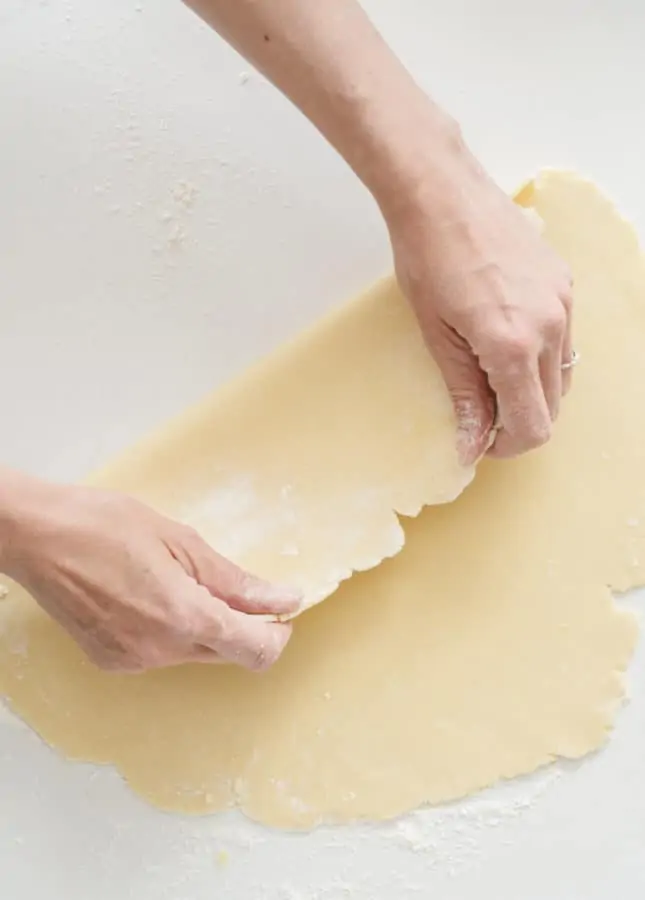
Foolproof Shortcrust Pastry (Food Processor Method)
Ingredients
- ½ cup cold unsalted butter
- 1 ½ cups all-purpose flour
- ¼ tsp kosher salt, or fine sea salt
- 1 large egg
- 2 tbsp ice water
Instructions
- Cut the butter into small cubes and arrange on a small plate. Freeze for 20 minutes.
- Add the flour and salt to a food processor, then pulse to combine. Add the butter and process for 10 continuous seconds, until the mixture looks like coarse breadcrumbs.
- Add the egg and process for 5 seconds. Add the ice water and process for 20 seconds. The dough should now start clumping together. Turn the mixture out onto a work surface. The mixture will easily hold together when pressed. Using your hands, gather the dough into a ball then flatten into a disk, kneading it as lightly as possible.
- If you’re making shortcrust pastry right before you need to use it, gather it into a disk, set it on a lightly floured surface, and roll it out to the required size. Ease into a pie or tart pan, lay flat on a baking sheet, or cut out and fit into muffin pans if making tartlets. Refrigerate for 30 minutes to an hour. Use as instructed by the recipe.
- You can alternatively wrap the ball of shortcrust pastry in plastic wrap and refrigerate it for 3 days, or freeze for 1 month.
- Bring refrigerated shortcrust pastry back to room temperature at least 30 minutes before rolling. Thaw frozen shortcrust pastry overnight in the refrigerator, then bring back to room temperature at least 30 minutes before rolling.
VARIATIONS
- Whole-wheat shortcrust pastry: Instead of the full amount of all-purpose flour specified in the recipe above, use 1 cup (125 g) all-purpose flour and ½ (65 g) whole wheat flour.
- Sweet shortcrust pastry for desserts: Add 1 tablespoon (12 g / 15 ml) granulated sugar to the flour mixture.
Video
Did you make this?
Tell me how you liked it! Leave a comment or take a picture and tag it with @foodnouveau on Instagram.
Disclosure Notice: This site is a participant in the Amazon Associates Program, an affiliate advertising program designed to provide a means for the site to earn fees by linking to Amazon and affiliated sites.
If you click on an affiliate link, I may earn advertising or referral fees if you make a purchase through such links, at no extra cost to you. This helps me creating new content for the blog–so thank you! Learn more about advertising on this site by reading my Disclosure Policy.
Author: Marie Asselin
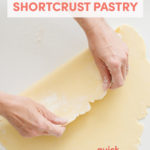
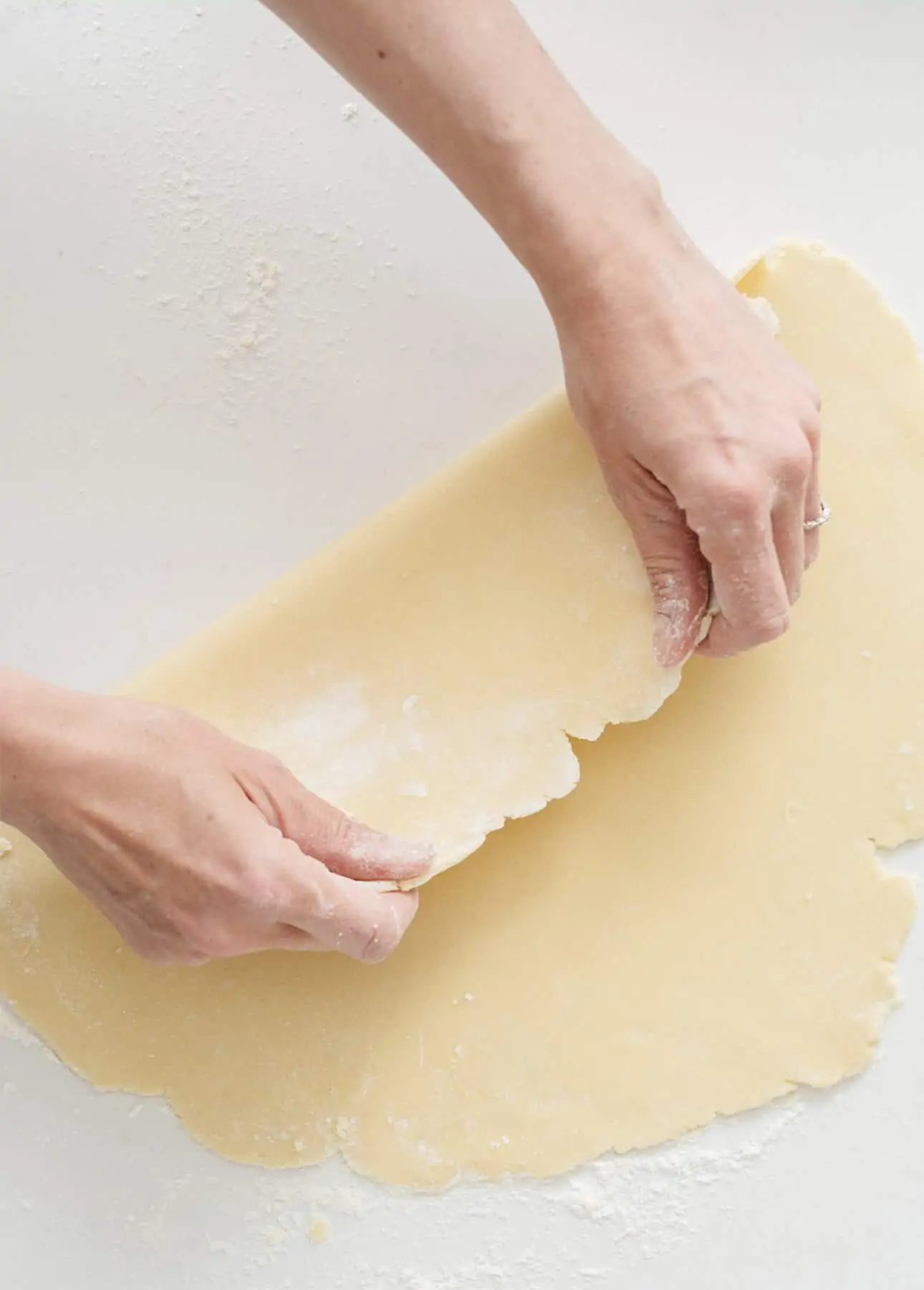

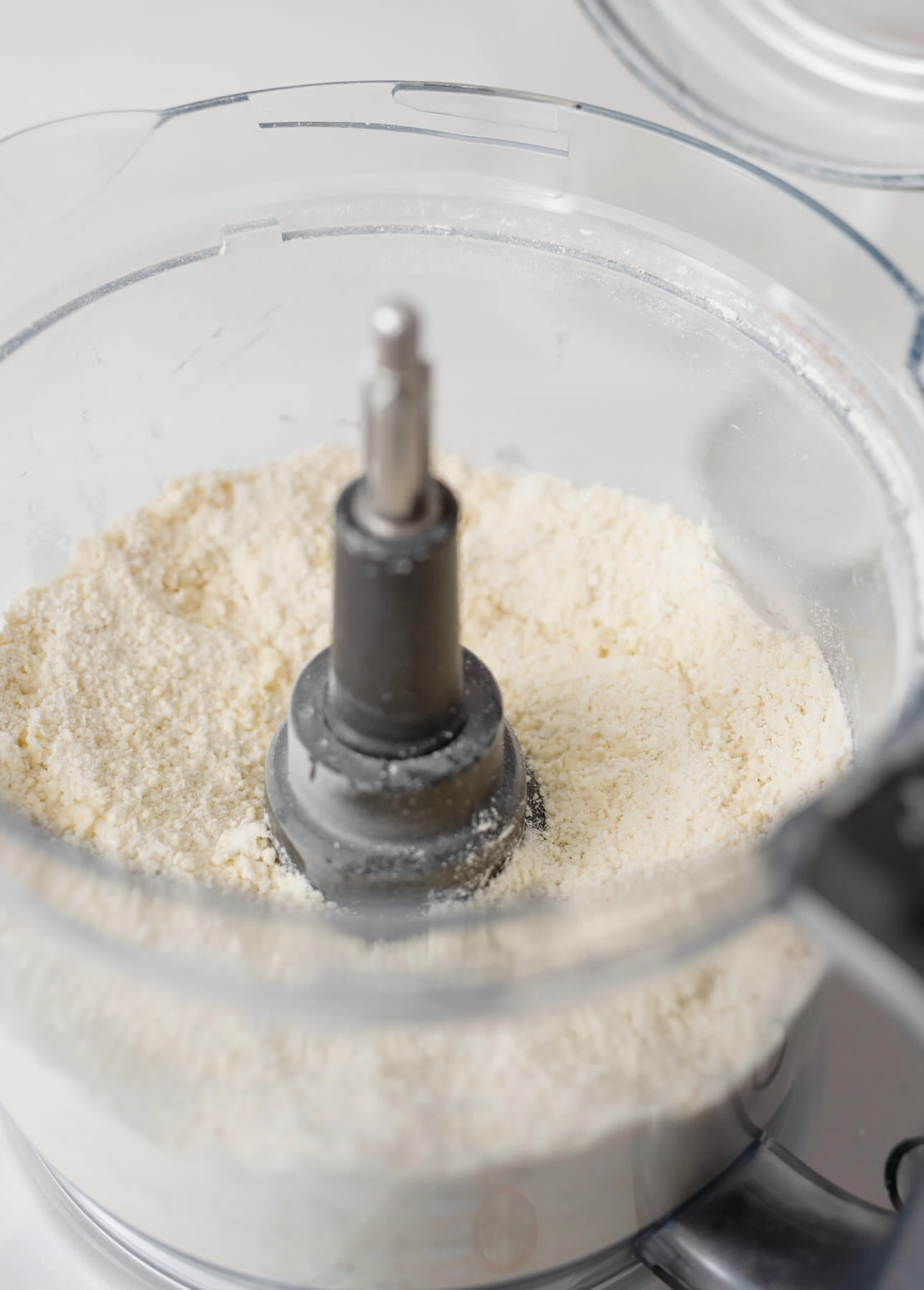

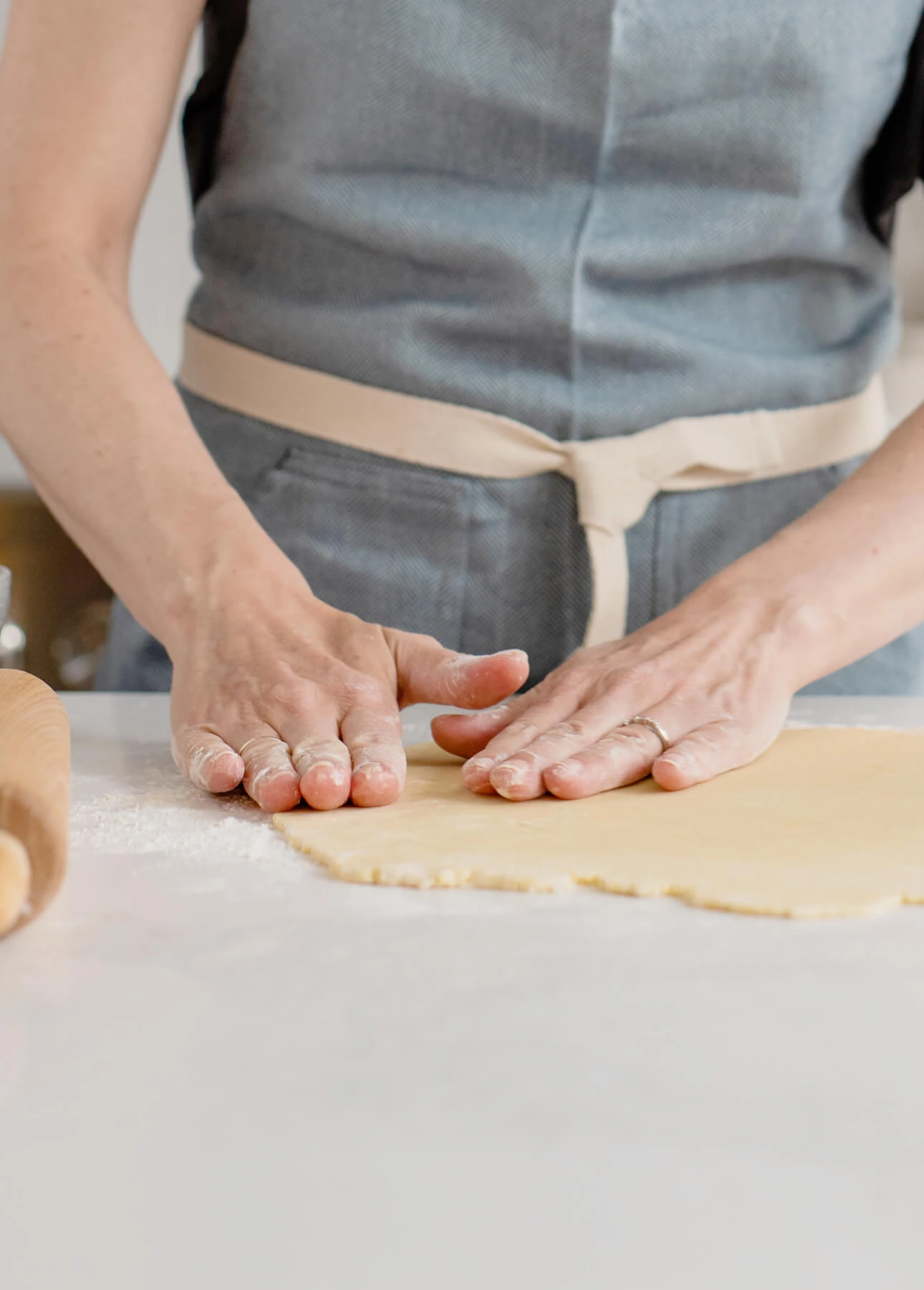
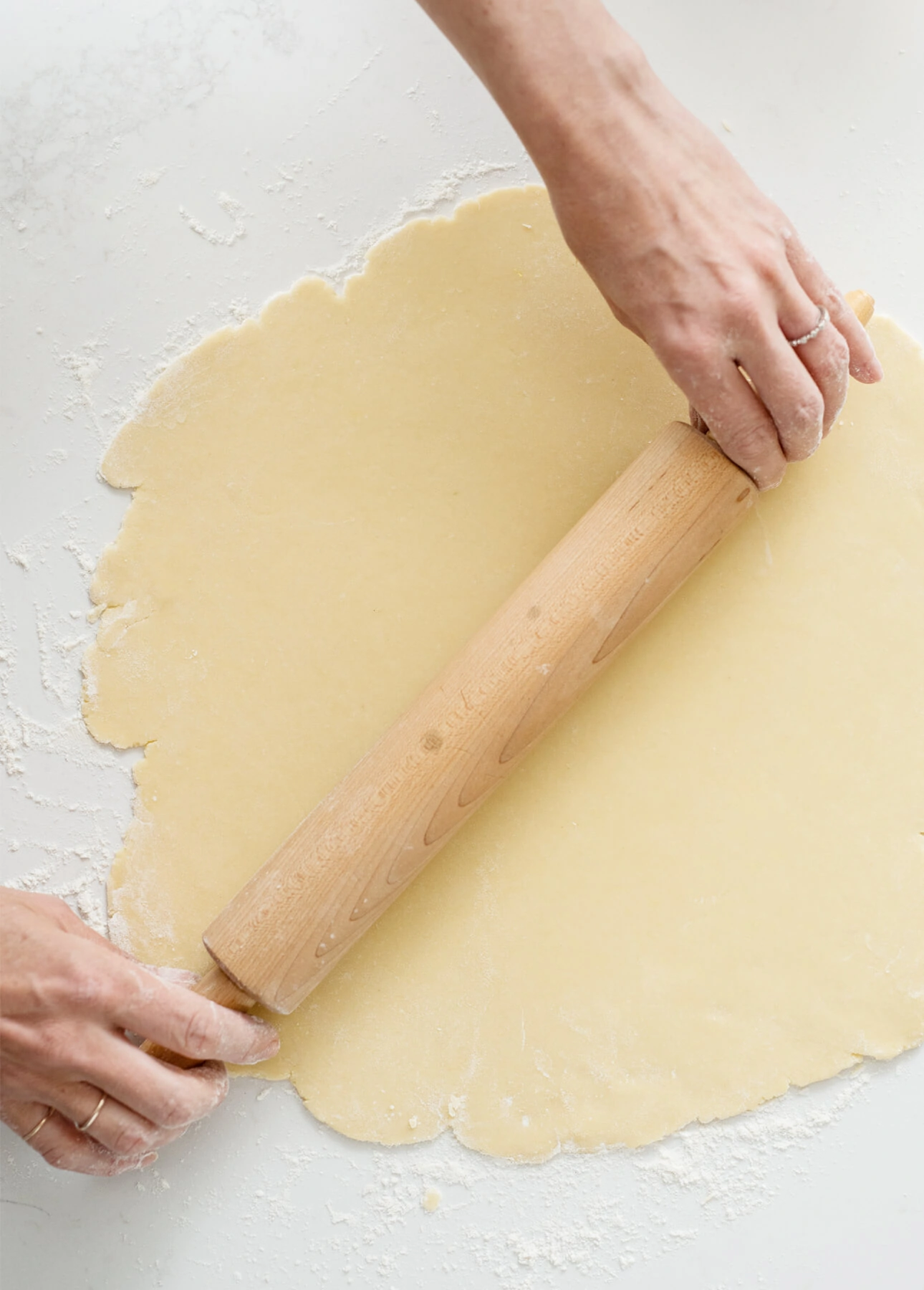
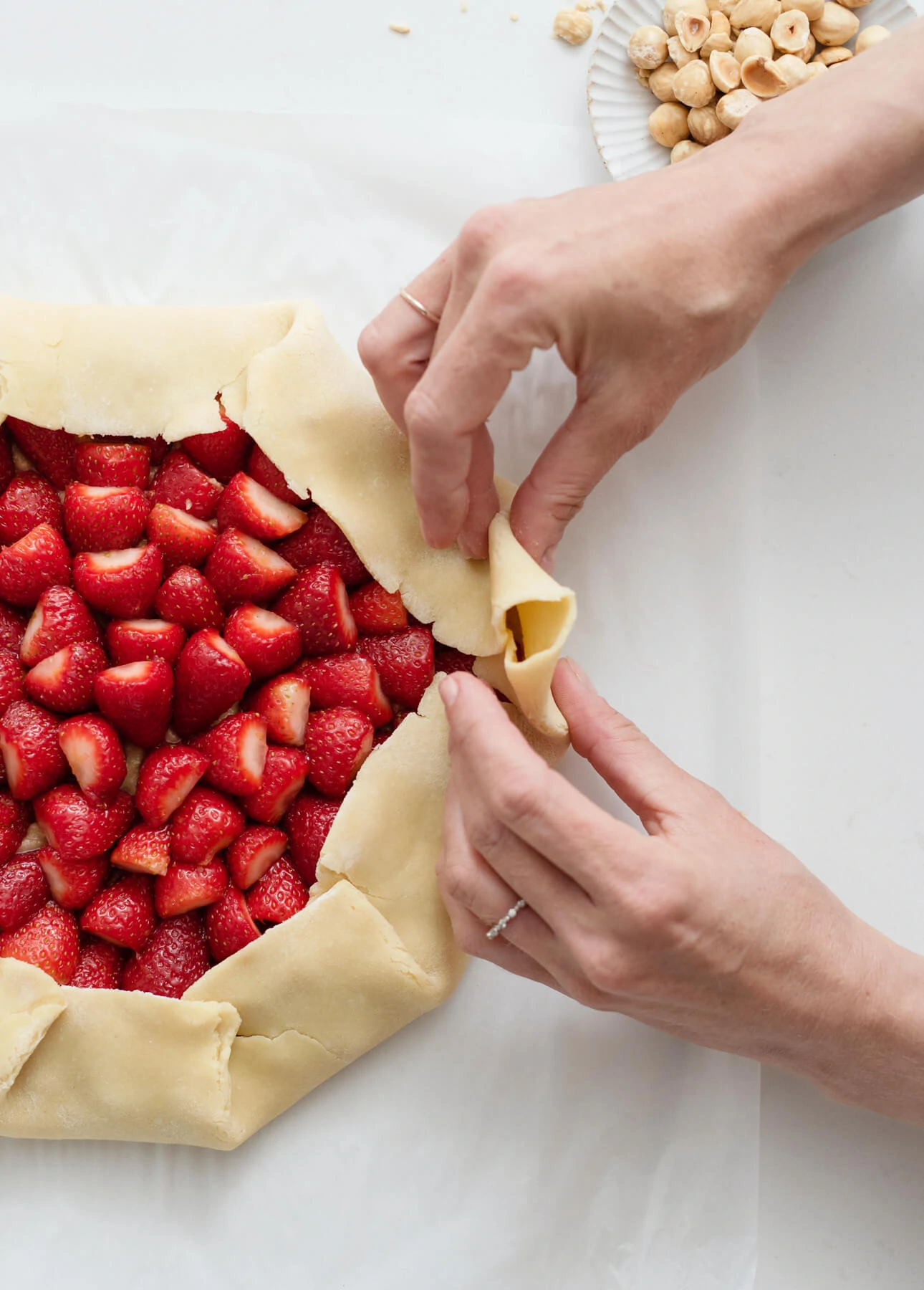
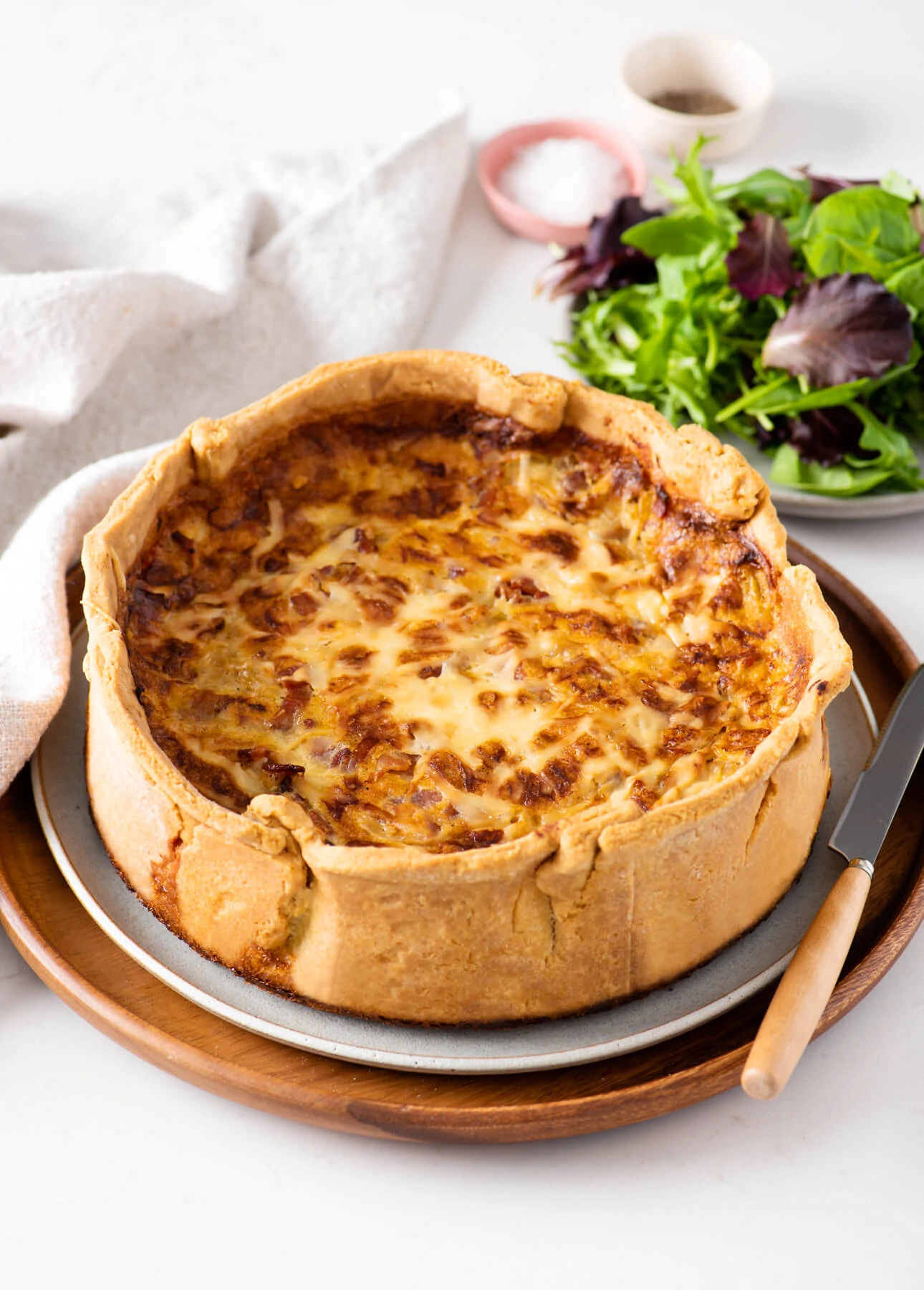
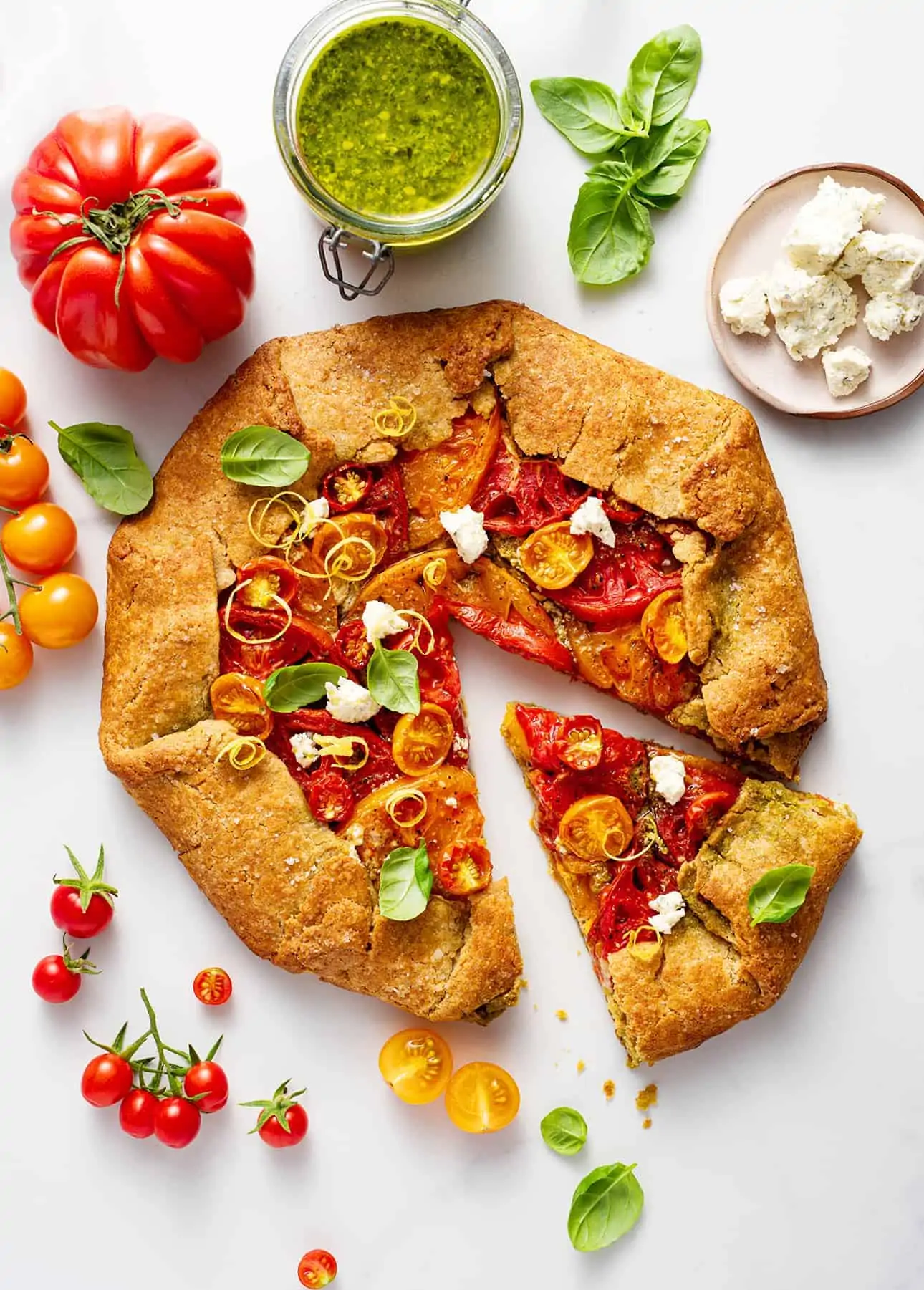
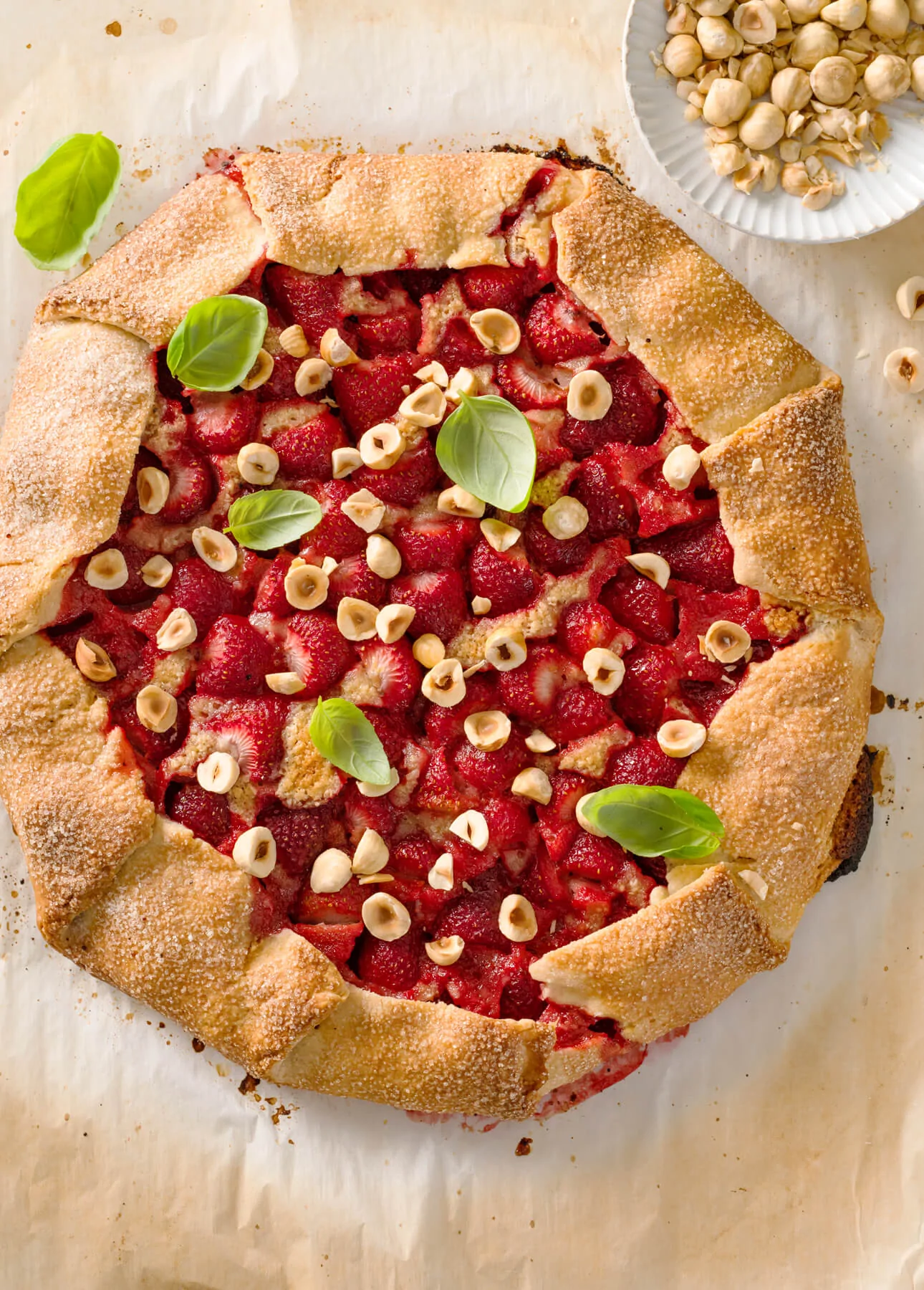
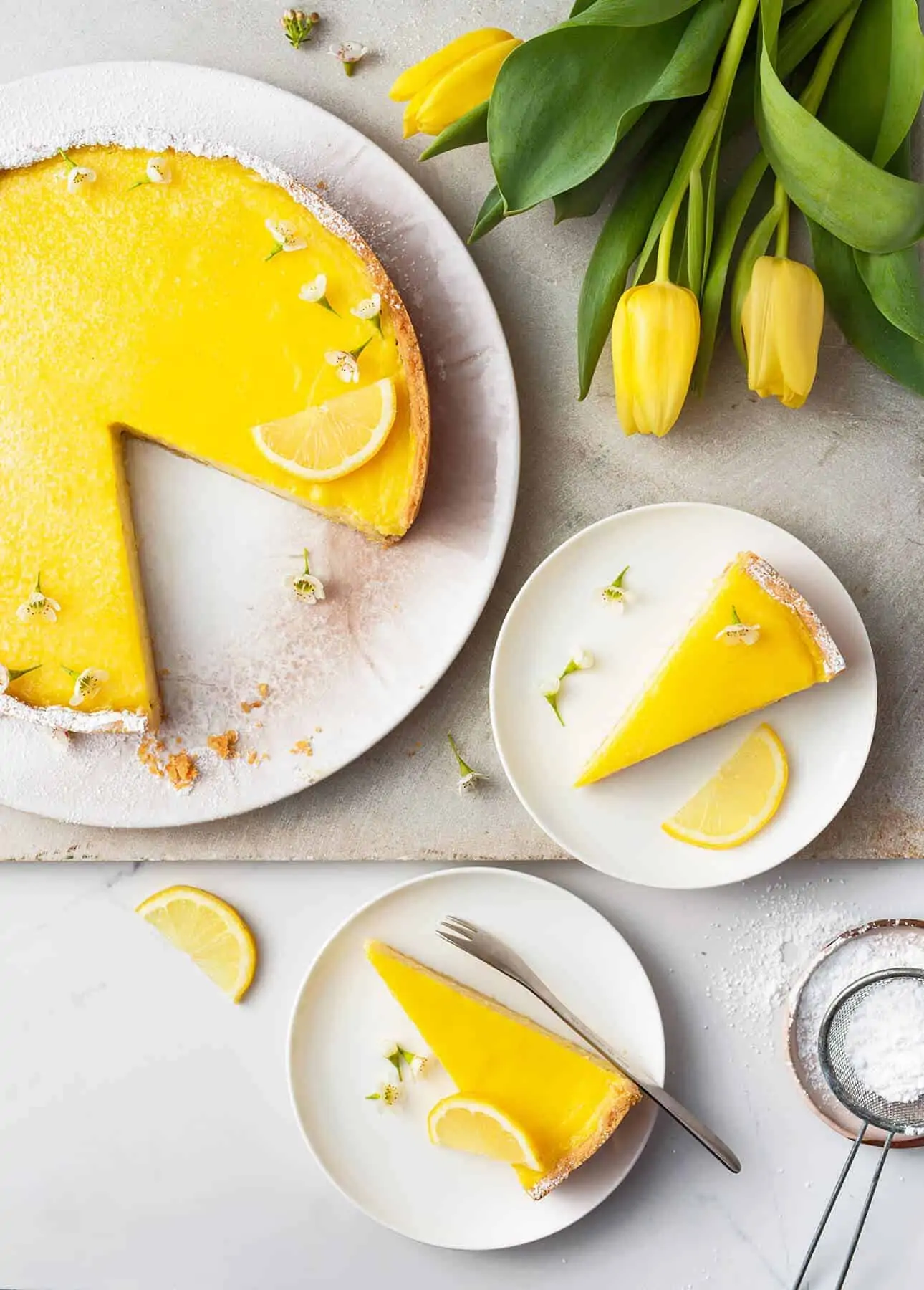
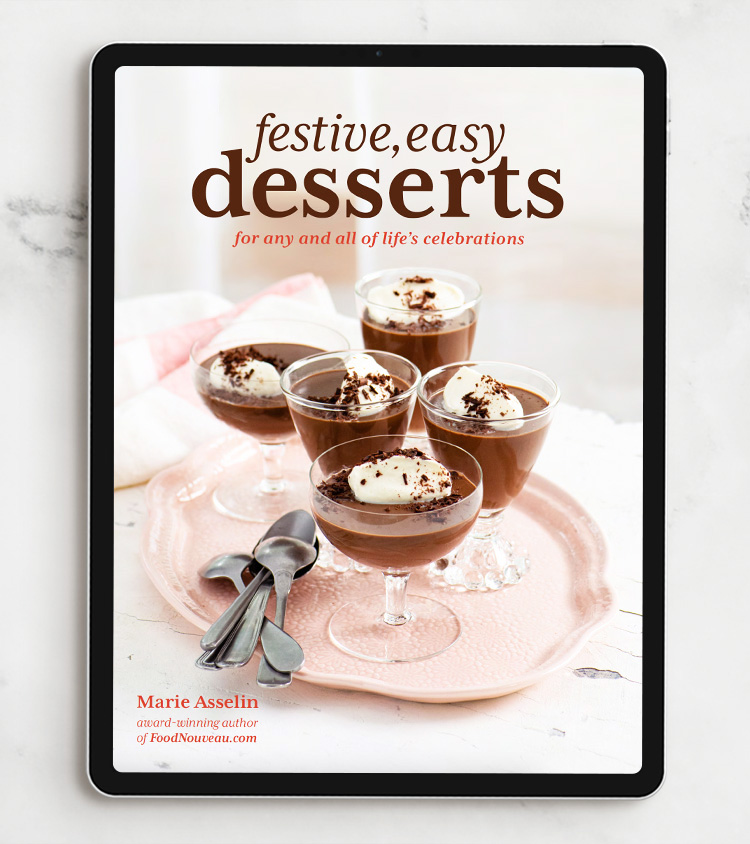
I’m so excited to try this recipe and method , do you find your pastry shrinks away from the tart tin? That’s usually my problem, the pastry case looks great going into the oven but comes out shrink away from the sides and messy looking
Hi Emma! This shortcrust pastry doesn’t shrink. Pastry shrinks when it has been overworked. This one comes together so quickly in the food processor, that’s what makes it to great! Rolling it out straightaway also ensures you manipulate it as little as possible. (Cold pastry is harder to roll out, which means it can be easy to overwork it.) I hope you’ll give my recipe a try, it’s a keeper!
Best processor pastry. I love the precision of the timings. Works every time for me. I do stick to old habits and add a bit of vinegar to the water.
Great recipe, quick and easy.
That was my goal! Thanks Lee 🤗
I have tried and failed many times to make really good pie crust. This time I have a winner!!
Cheers to all those delicious pies to come! 😍
What really amazes me is that it rolls like a dream. I love that it’s flaky. To me, the egg gives it an almost croissant flavor. Not only is this my go-to, I’ve passed it along to my daughter and my nieces. We are all big fans.
I find rolling out this smooth, supple shortcrust pastry is so satisfying! Happy you’ve been enjoying it too, Kate. Thank you so much for passing the recipe on to your loved ones! The world can’t ever be filled with too many pies 😍
Sooo in love with this technique
It works as perfectly as you say it does.
Thank you for sharing
I will never make another failed attempt at pie crust again, this is MY foolproof recipe from now on!
Thank you so much for taking the time to write, Cindi! This method is a life-saver, isn’t it? I just love how reliable it is!
Struggling with the Maths. 3:2:1 is flour:butter:water right? So 1 1/2 cups of flour should have 1 cup of butter, yet the recipe says 1/2 cup.
That is a 3:1: water ratio by my maths.
Hey Heather! Your maths are right, and I will alter my article because I realize it might not be as clear as I hoped it would be. What I meant is that the pie crust ratio is usually 3:2:1 but shortcrust pastry also adds in an egg, which alters that ratio a bit. The usual shortcrust pastry flour to butter ratio is about 2:1, which would mean 3/4 cup butter. While perfecting my version of shortcrust pastry, I found it was best to lower the butter content to achieve the perfect balance of easy to make/flaky result. There would be nothing wrong in adding that extra 1/4 cup butter if you want to give it a try! 😉 I hope my comments help, and thank you for pointing out I needed to add some precision to that ratio explanation.
So pleased I found this technique as I have tried many times without success, and the ready rolled pate brisée here in France is nothing like UK stuff.
I too am in Normandie and can confirm as Liane says pies are really a thing here. I love mince pies and for the last 9 yrs have had to make do with ready rolled pate feuilletée (flaky pastry). Not anymore! Another one will be Lincolnshire sausage rolls! Only downside to it will be the effect on my waistline! Many thanks. 🙄
Your comment makes me so happy! Thank you for taking the time to write. I’d love to learn more about those Lincolnshire sausage rolls, if you care to share your recipe! Are they like pigs in a blanket? Sounds delicious 😍
So yes, finally, I can turn out a great tasting all butter crust that holds it shape and doesn’t crumble. I’ve always thought I was a great baker who just couldn’t turn out a decent pie crust. Not anymore. Plus, it’s so easy.
I was in the same boat as you for so long! Totally thought pies were out of my league for years 🙄 Not anymore! So happy I got you out of that baking funk! 🙌🏼
I made an English minced beef and onion pie and an apple pie with this recipe. Pies in Normandy are really a thing, so my husband loves it when I make them for him, today it’s going to be chicken and mushroom pie, and I’m using up last year’s mincemeat (we made a new batch a week ago) and making him traditional English mince pies!
Your pies all sound absolutely delicious! It’s so lovely to read my recipe is inspiring you to create such delicious meals 😍